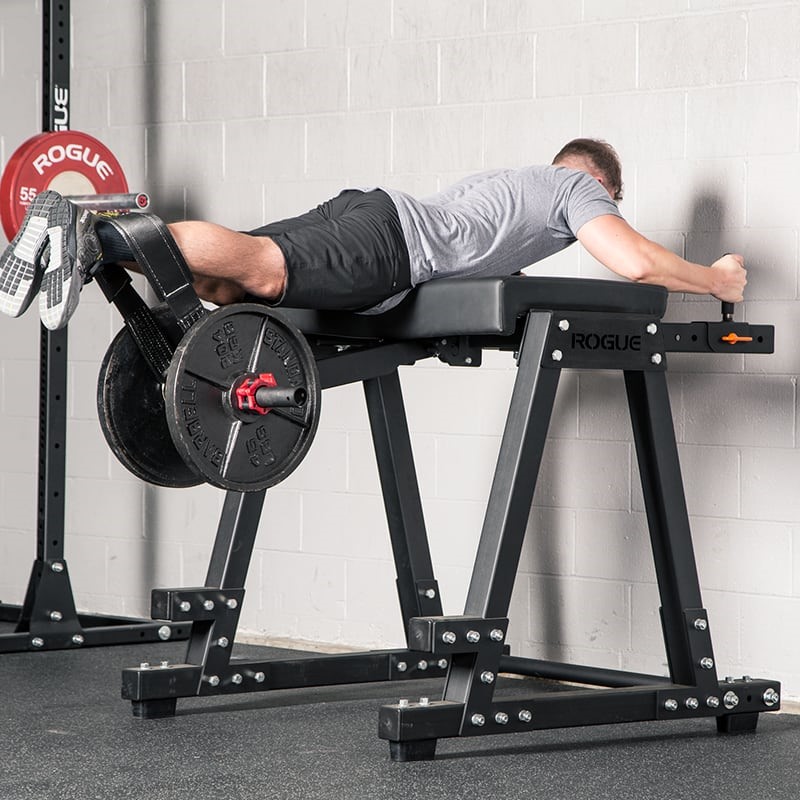Richardbrown
BANNED

It's about time you gave this hyperextension variation a try if you haven't already.
Lower body mobility is built on the strength of the lower back, glutes, and hamstrings. You are able to run, jump, hinge, and squat like a rock star because to these group of muscles. There are several excellent exercises that train these crucial muscles, such the reverse hyperextension, however they usually work in tandem with other muscles.
Reverse hyperextension is one of the best workouts for isolating those three muscles whether you're trying to increase their size, strength, or performance. Here, we'll discuss reverse hyperextension, including what it is, how to do it, the muscles it works, why it's good for you, and programming ideas.
Prepared to create a steel posterior? Continue reading.
What Is the Reverse Hyperextension?
Reverse hyperextensions can be done on a machine, while face down on a bench, a stability ball, or while lying on the floor. For a more severe muscle contraction, the targeted muscles of the glutes, hamstrings, and lower back are stretched beyond their usual range of motion. The glutes, hamstrings, and lower back can all gain strength and muscle mass by performing reverse hyperextensions, which also strengthens and stabilizes the lower back.
How To Do Them
1. Lie down on a stability ball, bench, hyperextension machine, or other surface. Your feet should be secured (on the machine) and your legs should be free to move while dangling off the edge.
2. Use your hips and hamstrings to raise your legs behind you to a height above your hips while maintaining straight legs and a tight core. Your glutes and hamstrings should experience a strong muscle tension as you hyperextend your hips.
3. After briefly maintaining the hyperextended position, slowly return your legs to the beginning position.
For each rep, reset and repeat.
Muscles Trained
The hamstrings, glutes, and erector spinae are the primary muscles targeted during reverse hyperextension.
• Hamstrings: They help the glutes in activities involving hyperextension by preventing knee hyperextension, which increases the hamstrings' isometric strength.
• Glutes: By raising the legs off the ground, these muscles stretch and hyperextend the hips.
• Erector Spinae: By working isometrically, these three muscles support your stability and give the larger muscles room to operate.
Reverse Hyperextension Benefits
When you lift, you want your glutes to pop, and the reverse hyperextension helps you achieve this. Training the reverse hyperextension offers other significant advantages besides vanity.
• Better posture: Maintaining excellent posture and maintaining a neutral spine during heavily loaded workouts that compress the spine depends on strong lower back and glute muscles.
• Healthier knees and ankles: Training the glutes and hamstrings increases hip mobility and their strength. Because the knee and ankle won't have to compensate for any limitations in hip movement, this just improves knee stability and ankle mobility.
• Increases muscle mass: Exercises with a wide range of motion, such as the reverse hyperextension, which pre-stretch the working muscles during the eccentric phase before the concentric phase, give you a better chance of increasing muscle mass.
• Reduced lower back discomfort: Stronger glutes and more mobile hips help with core stability. By exercising in this way, your chances of avoiding lower back pain are increased because the lower back won't have to take up the slack caused by restricted hip mobility.
• Lower-back strength: The lower-back muscle is essential for maintaining spinal neutrality and aids in the integrity of your spine under load, especially during squats and deadlifts. With squat and deadlift variations, the erector spinae can aid prevent spinal flexion. When performed properly, reverse hyperextension provides strength to this position, allowing you to defend the lower back.
Mistakes Often Made
It seems easy enough; you raise your legs behind you and experience gluteal burn. To make the most of this trend, though, there are a few things to watch out for.
More is not always better: With glute isolation exercises, there is a propensity to hyperextend the lower back to gain more range of motion, but more is not always better. This is a grave offense. If you feel it more in your lower back than your glutes, you might be overusing your lower back.
Utilizing motion rather than tension: This exercise is not a one-rep-max. It is preferable to perform the exercise slowly and with awareness of your hamstrings and glutes as opposed to using body English to increase the weight. Better to concentrate on tension in this situation than weight.
Suggestions For Programming
Your objectives will determine the set and rep strategies employed with reverse hyperextension. Depending on your goal, here are four suggested set-and-rep methods.
Increasing muscular endurance: This requires stressing the posterior muscles and feeling the burn. Less sets and more reps are preferable here. Perform two to four sets with between 15 and 25 reps while starting with your own weight and adding weight as it gets more comfortable.
Hypertrophy: All muscle groups experience growth, including your rear. With increasing load and longer periods of stress, the difficulty is raised. Higher reps, more time under tension, or heavier weights are used to achieve this. Here, performing three to five sets of eight to fifteen repetitions is effective.
Enhancing performance: It is preferable to use your own bodyweight and operate slowly while trying to increase duration under stress for heavy squats and deadlifts. As an auxiliary workout, performing three to four sets of 12 to 15 reps is effective.
Here are some programming examples that make use of the preceding suggestions:
Superset For Performance
• Reverse hyperextension: 10-15 reps
• Passive leg lowering (each side) 10 reps
Perform three to four supersets, taking between-exercise breaks of up to 90 seconds. It is preferable to complete this after your main strength exercise for the day.
Superset for Growth
• Weighted reverse hyperextension: 12–15 repetitions
• Goblet squat: 8-15 reps
Perform three to five supersets, with two to three minutes of recovery in between each superset and minimal break between exercises. It is preferable to complete this after your main strength exercise for the day.
Superset for Endurance
• Bodyweight Reverse Hyperextension: 15 to 20 repetitions
• Hip Flexor Stretch: Half-Kneeling: 60 seconds on each side
Perform two to three supersets, with little to no break in between the supersets and between the exercises. It is preferable to complete this after your main strength exercise for the day.
Variations and Alternatives
There are alternative ways to train the hyperextension action if you don't always have access to a reverse hyperextension or GHD machine. To strengthen your glutes, hamstrings, and lower back, try these three reverse hyperextension variants and alternatives.
Stability Ball Reverse Hyperextension
If your gym lacks a reverse hyperextension machine or GHD, the stability ball reverse hyperextension is a wonderful alternative. The same muscles are trained in this hyperextension form, with an additional benefit. Because you're afraid of falling off, the instability helps you concentrate on your technique. Additionally, the longer time under and expanded range of motion help with core stability and muscular development.
Back Extension at 45 or 90 Degrees
The reverse hyperextension trains the same muscles from a different angle than 45- or 90-Degree back extensions. They are efficient variations for building muscle and strength in your hamstrings and lower back. The fact that your torso moves rather than your legs during a reverse hyperextension is the main distinction between the two exercises.
Bench Reverse Hyperextension
The stability-ball variation and the bench reverse hyperextension are comparable, but the bench reverse hyperextension has less range of motion (ROM). However, the decreased ROM makes it simpler and allows you to perform more repetitions. The difficulty will increase if you hold a dumbbell in place between your feet.
Glute-Hamstring Raise
The glute hamstring lift requires more of your eccentric hamstring strength, making it an advanced technique. The GHR is a fantastic workout for strengthening your glutes, lower back, and hamstrings. If you don't have access to a reverse hyperextension machine, this is a fantastic alternative.
Various Hip Thrusts
Regardless of the variant you use, hip thrusts are a wonderful variation for building glute strength and growth. Hip thrust develops your glutes in size and strength, strengthening proper hip flexion and extension mechanics for more challenging and highly loaded exercises. However, because your knees are bent at a 90-degree angle, the hip thrust does restrict hamstring and lower back involvement.
Barbell Good Morning
The good morning exercise is another excellent substitute for the reverse hyperextension because it works the same muscles. In comparison to reverse hyperextension, carrying a barbell on your back needs more shoulder mobility and upper back strength. The barbell good morning differs from reverse hyperextension in that it concentrates more on the lower back, glutes, and less on the hamstrings.














